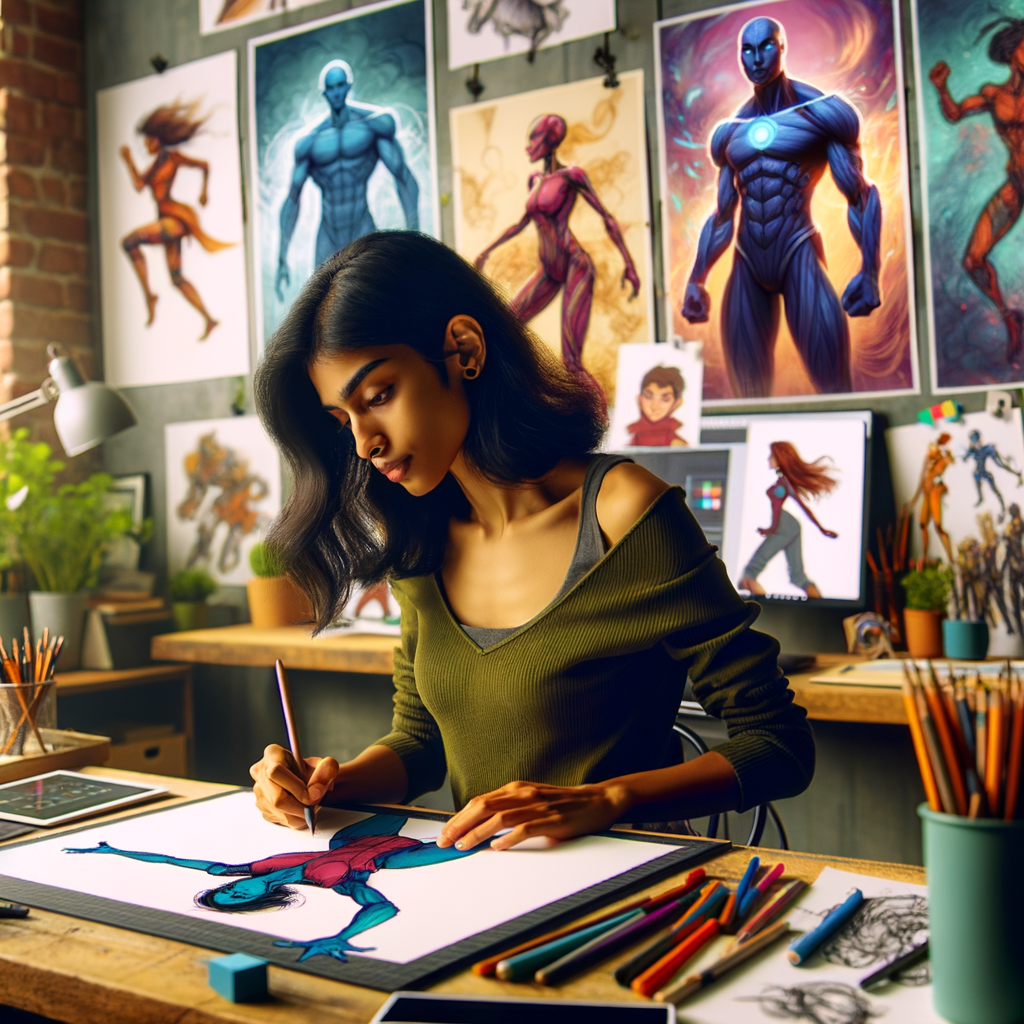
Creating dynamic characters is essential for bringing narrative and emotion to your art. Understanding anatomy and motion not only enhances the realism of your characters but also helps them convey stories effectively. In this article, we will delve into techniques and tips for mastering character dynamics, enabling you to make your characters come alive on the digital canvas.
Creating dynamic characters is crucial for any digital artist wishing to tell a compelling story through their work. Whether it’s for animation, comic books, or conceptual design, the ability to depict motion and anatomical accuracy can make a significant difference in the impact of your art.
Many beginner artists struggle with the representation of movement and proportion, often leading to stiff, lifeless characters. This article aims to equip you with foundational knowledge about anatomy and motion, offering practical techniques to breathe life into your creations.
Understanding Anatomy
The foundation of creating dynamic characters lies in understanding human and animal anatomy. Familiarizing yourself with how bodies move, as well as their structure, will enhance your ability to illustrate realistic and lively characters.
The Basics of Anatomy
Anatomy can be broken down into several key components:
- Bone Structure: Knowing the basic skeleton helps you understand how limbs move and interact. For instance, the way the shoulder joint connects to the arm affects how the arm can be posed.
- Muscle Groups: Understanding major muscle groups, their positions, and how they contract will help portray motion realistically. The bicep enlarges when the arm is bent, while the will contract when straight.
- Proportions: Different styles have varying proportions of head-to-body ratios. Traditional proportions follow a human figure’s height as being approximately 7 to 8 heads tall, while other styles may exaggerate or minimize features.
Studying Real-Life References
To develop a strong understanding of anatomy, study real-life references. Use online resources such as Posemaniacs, or visit the nearest museum to study human sculptures. Observational drawing is also invaluable; try sketching live models or animals in motion.
Utilizing 3D Models
3D modeling software, such as Blender or DAZ 3D, can be immensely useful for understanding anatomy and motion. With 3D models, you can rotate and adjust poses, providing a comprehensive view of character form and structure.
Motion and Gesture Drawing
Once you have a grasp of anatomy, the next step is to portray motion. Gesture drawing is an invaluable practice for capturing the essence of movement quickly.
The Importance of Gesture Drawing
Gesture drawing involves creating quick sketches to capture the pose’s action. The aim is not to create a perfect piece of art, but to understand the flow of movement and the overall posture of the character.
- Short Timeframe: Set a timer for 30 seconds to 2 minutes for each pose. This encourages you to focus on the essence of the pose rather than details.
- Dynamic Poses: Seek out dynamic poses that express emotions and actions. Use online sources for quick pose references.
- Line of Action: Every dynamic pose has a line of action that guides the viewer’s eye and creates a sense of flow. Try to establish this line in your gesture drawings.
Practicing with Animation
If possible, animating your characters, even in short gif formats, can encourage density and fluidity in your designs. Learning whether character designs retain their essence when moved leads to a better understanding of basic arcs of movement, which aid in creating dynamic poses.
Bringing Characters to Life
Incorporating your understanding of anatomy and motion will lead to more engaging and lifelike characters. Here are several tips to consider:
Start with Silhouettes
A silhouette can determine the character’s personality just as much as its features. Aim for a strong and recognizable shape that conveys motion; an elaborate silhouette often leads to a memorable character design.
Explore Expressions
Emotional expression is a key aspect of character design. Play with different facial expressions that match the pose and movement. Keep in mind how muscles and features adapt when expressing emotions.
Layering Dynamics with Texture
Implement texture in your characters to represent motion. For instance, flowing hair or clothing should visually express movement with lines and shading that follow the line of action.
Conclusion
Creating dynamic characters is an essential skill for any digital artist. By understanding anatomy and practicing gesture drawing, you can effectively bring your characters to life. Remember to constantly learn and experiment with your techniques, as every new creation is an opportunity for growth. As you practice these skills, take the time to explore the stories that are waiting to be told through your art. Let your characters leap off the screen and into the hearts of viewers!
We hope this article inspires you to delve deeper into the fascinating world of character design. Happy drawing!

